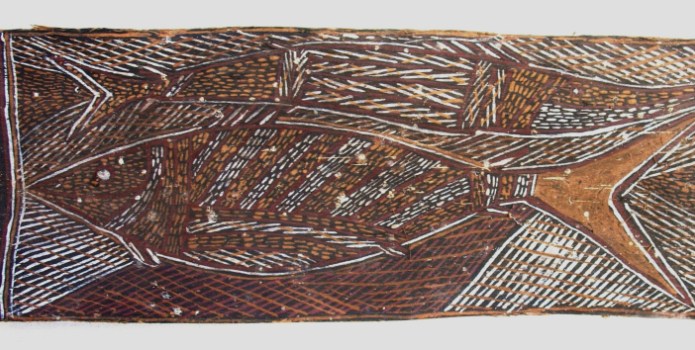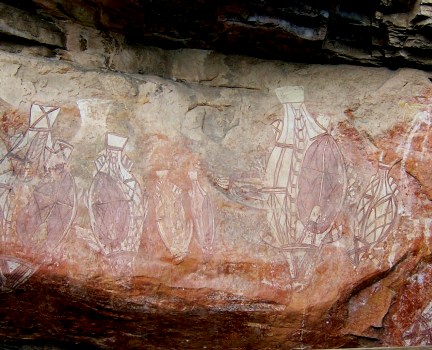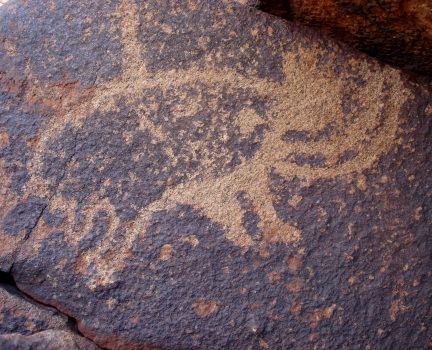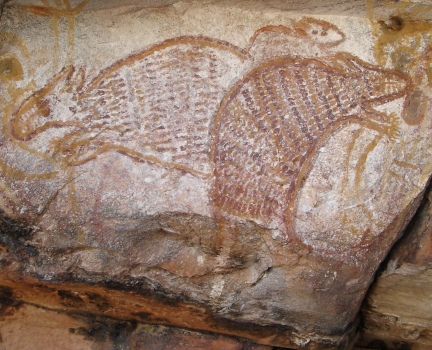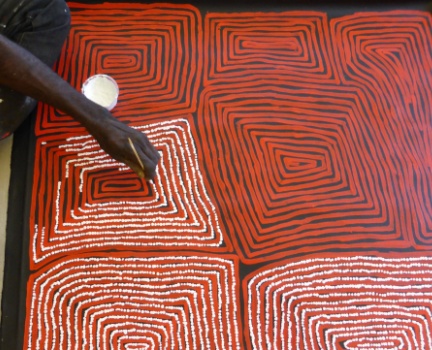The World’s Oldest Continuous Living Culture
The idea that an ancient art form can be both timeless and contemporary is a challenge to our understanding of the progress of culture and ideas. But Aboriginal art has emerged from its timeless connection to the Australian landscape and its first inhabitants, to be seen by the wider world during the past forty years as an innovative and iconic art form unique to Australia.
It seems odd to talk about the emergence of Aboriginal art in the context of Aboriginal culture being the oldest continuous living culture in the world. This artwork has been emerging for an estimated 40,000 years. Its historic record is embedded in ancient rock art galleries which reach back in time to record now-extinct animals and landscapes transformed by ice-age climate change.
The description of this art as timeless simply connects it to human pre-history, the era of human culture that carries no written records and scant evidence of the culture and lifestyles of human ancestors, going back about 400 generations. Aboriginal art from rock galleries may take us back 1000 generations of Aboriginal occupation in Australia, and further technological advances may allow us to back-date that figure at least another 1000 generations.
One of the defining qualities of the Aboriginal world is the tradition of passing on an ancient culture through song cycles that are passed down word-for-word across the generations. These song cycles or songlines reach deep into the past and link modern Aboriginals with their ancestral beliefs and cultural inheritance. For Aboriginal groups which had no written language, the preservation of culture is linked to the shared knowledge of songs, rituals, dances, storytelling, symbols and meaningful patterns.
Thus the clan patterns painted onto the bodies of dancers participating in a ceremonial event that tells one of the creation stories of the group links the people to symbols, to the land, to the ritual story, to the past and to each other.
This has been the role of art in Aboriginal groups, to tell shared stories and make connections in a complex social network that reinforces the group.
The decision in 1971 by a group of elder desert men to begin to paint their cultural inheritance onto boards using western art materials began a movement that was to have a profound effect on Aboriginal communities around Australia. Its influence would equally extend to the non-Aboriginal audience which would first encounter Aboriginal culture through these paintings.
Read more:

